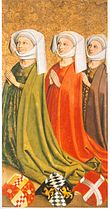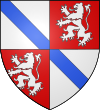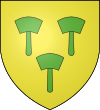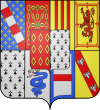
The Love Parade is a 1929 American pre-Code musical comedy film, directed by Ernst Lubitsch and starring Maurice Chevalier and Jeanette MacDonald, involving the marital difficulties of Queen Louise of Sylvania (MacDonald) and her consort, Count Alfred Renard (Chevalier). Despite his love for Louise and his promise to be an obedient husband, Count Alfred finds his role as a figurehead unbearable. The supporting cast features Lupino Lane, Lillian Roth and Eugene Pallette.
Queen Mary, Queen Marie, or Queen Maria may refer to:
A queen consort is the wife of a reigning king, and usually shares her spouse's social rank and status. She holds the feminine equivalent of the king's monarchical titles and may be crowned and anointed, but historically she does not formally share the king's political and military powers, unless on occasion acting as regent.
A prince consort is the husband of a monarch who is not a monarch in his own right. In recognition of his status, a prince consort may be given a formal title, such as prince. Most monarchies do not allow the husband of a queen regnant to be titled as a king because it is perceived as a higher title than queen, however, some monarchies use the title of king consort for the role.
Empress dowager is the English language translation of the title given to the mother or widow of a Chinese, Japanese, Korean, or Vietnamese monarch in the Chinese cultural sphere.

A queen regnant is a female monarch, equivalent in rank, title and position to a king. She reigns suo jure over a realm known as a kingdom; as opposed to a queen consort, who is married to a reigning king; or a queen regent, who is the guardian of a child monarch and rules pro tempore in the child's stead or instead of her husband who is absent from the realm, be it de jure in sharing power or de facto in ruling alone. A queen regnant is sometimes called a woman king. A princess, duchess, or grand duchess regnant is a female monarch who reigns suo jure over a principality or (grand) duchy; an empress regnant is a female monarch who reigns suo jure over an empire.
Duke of Mayenne is a title created for a cadet branch of the House of Guise. It subsequently passed by marriage to the Gonzaga in 1621, who sold it to Cardinal Mazarin in 1654; he bestowed it on his niece, Hortense Mancini in 1661. Due to the terms of the entailment on the title, it became extinct in 1781, but it is still claimed by the Sovereign Prince of Monaco, a descendant of Hortense.
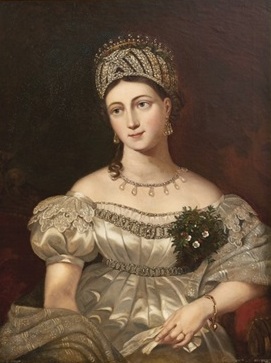
Louise of Saxe-Gotha-Altenburg ; was the wife of Ernst I, Duke of Saxe-Coburg and Gotha and the mother of Duke Ernst II and Prince Albert, husband of Queen Victoria.

Louise of Lorraine was Queen of France as the wife of King Henry III from their marriage on 15 February 1575 until his death on 2 August 1589. During the first three months of their marriage, she was also Queen of Poland and Grand Duchess of Lithuania. As a dowager queen, Louise held the title of Duchess of Berry.

Louise of Savoy was a Savoyard Princess by birth. She became by marriage Margravine of Baden-Baden, consort to Ferdinand Maximilian, heir apparent of Baden-Baden, and the mother of Louis, Margrave of Baden-Baden, the famous chief commander of the Imperial army.
Suo jure is a Latin phrase, used in English to mean 'in his own right' or 'in her own right'. In most nobility-related contexts, it means 'in her own right', since in those situations the phrase is normally used of women; in practice, especially in England, a man rarely derives any style or title from his wife although this is seen in other countries when a woman is the last heir of her line. It can be used for a male when such male was initially a 'co-lord' with his father or other family member and upon the death of such family member became the sole ruler or holder of the title "in his own right" (alone).
This article is of the Countesses of Dreux; the consorts of the French counts of Dreux.

Udjebten or Wedjebten was an ancient Egyptian queen consort, a wife of King Pepi II of the Sixth Dynasty.
This is a list of the princess consorts of Achaea, the consorts of the Princes of Achaea.
This page is based on this
Wikipedia article Text is available under the
CC BY-SA 4.0 license; additional terms may apply.
Images, videos and audio are available under their respective licenses.

